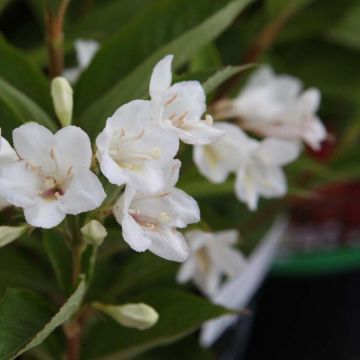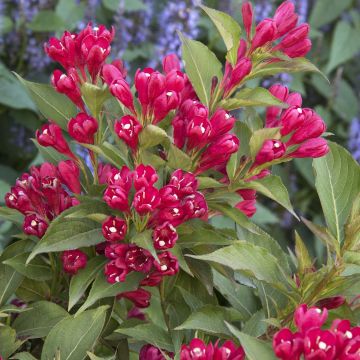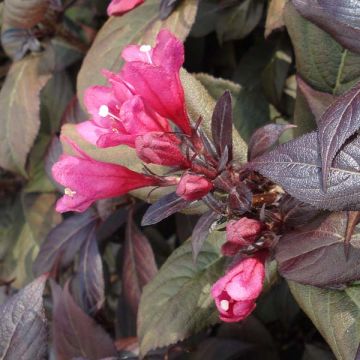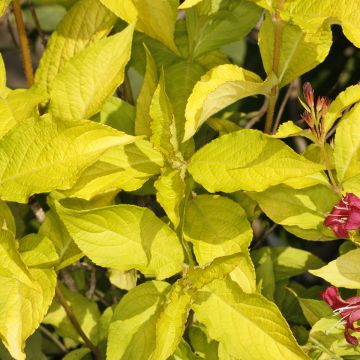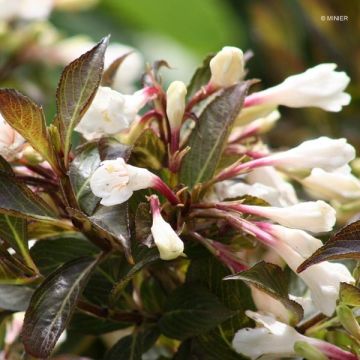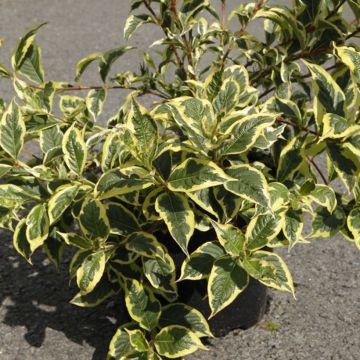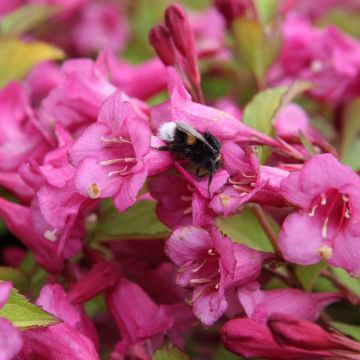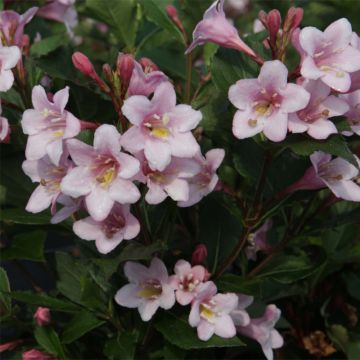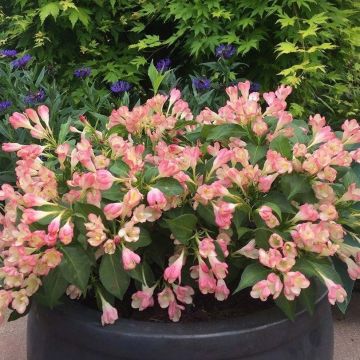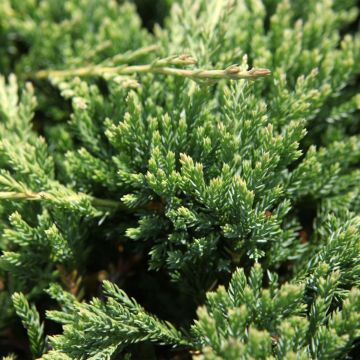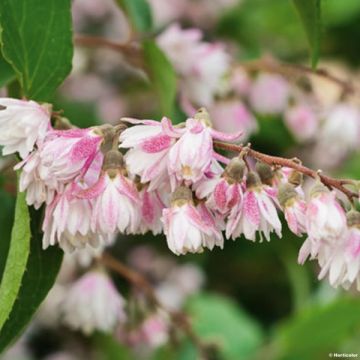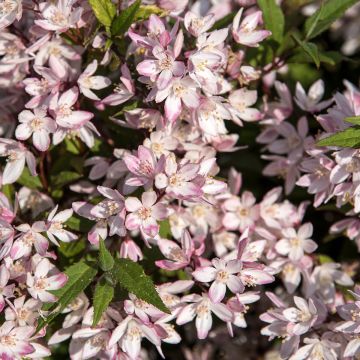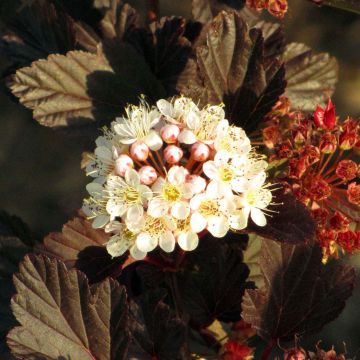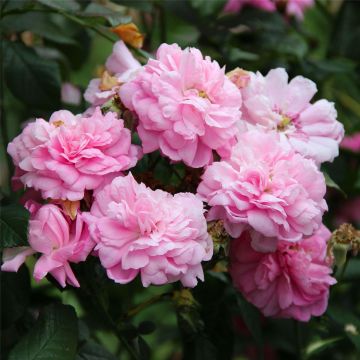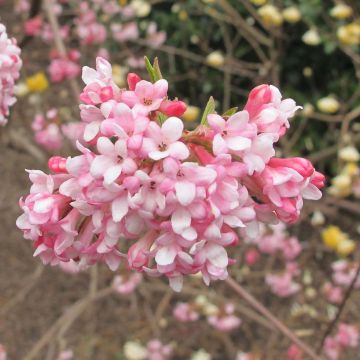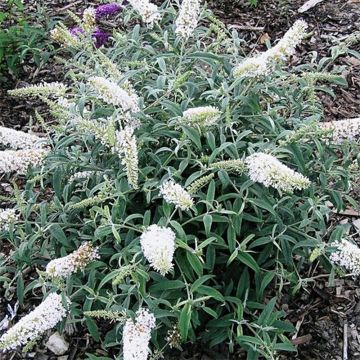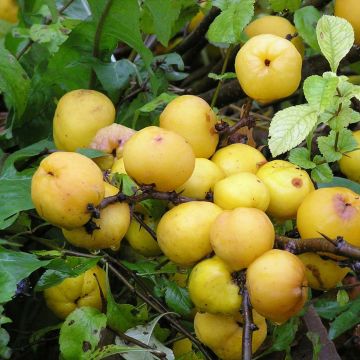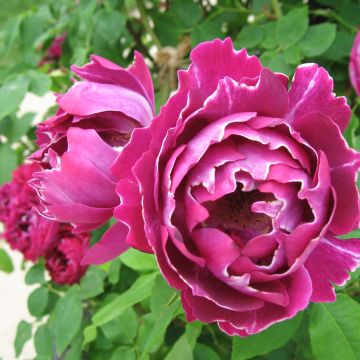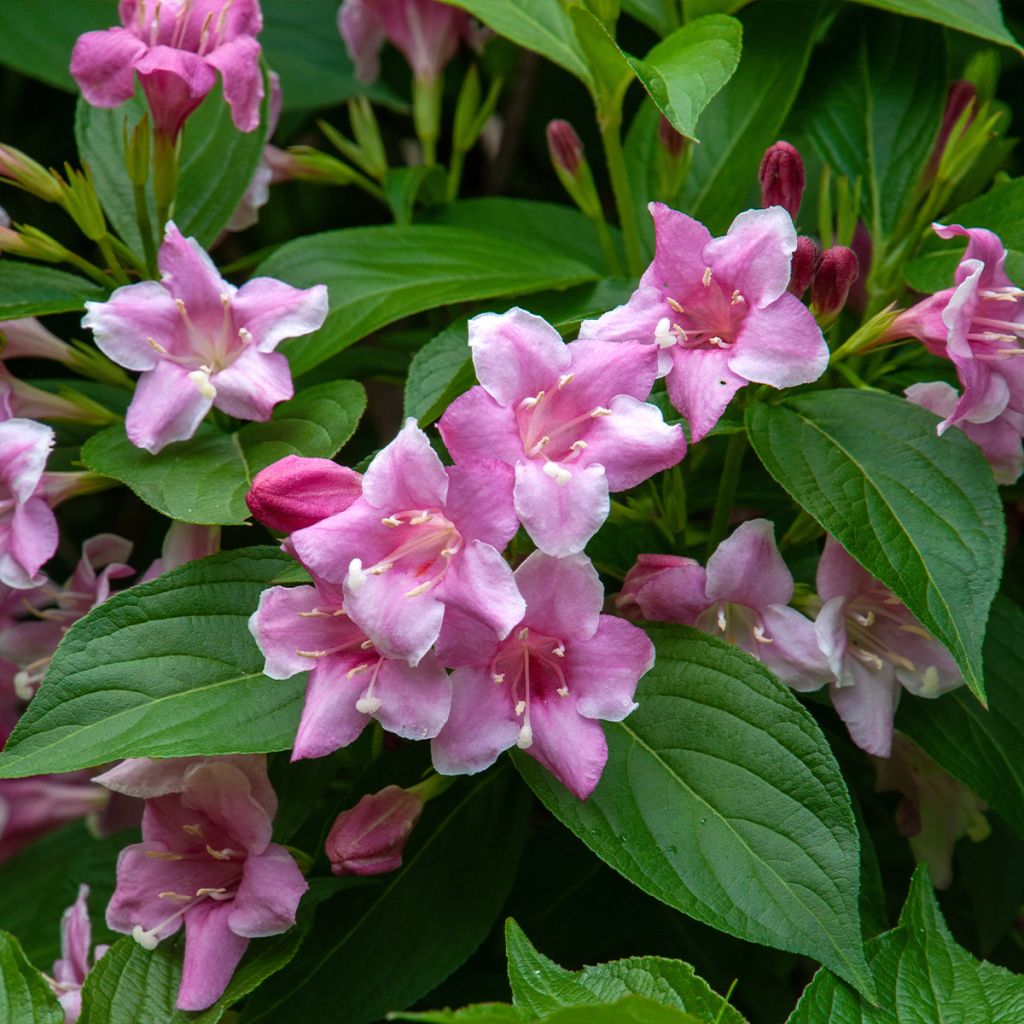

Weigela florida Korea
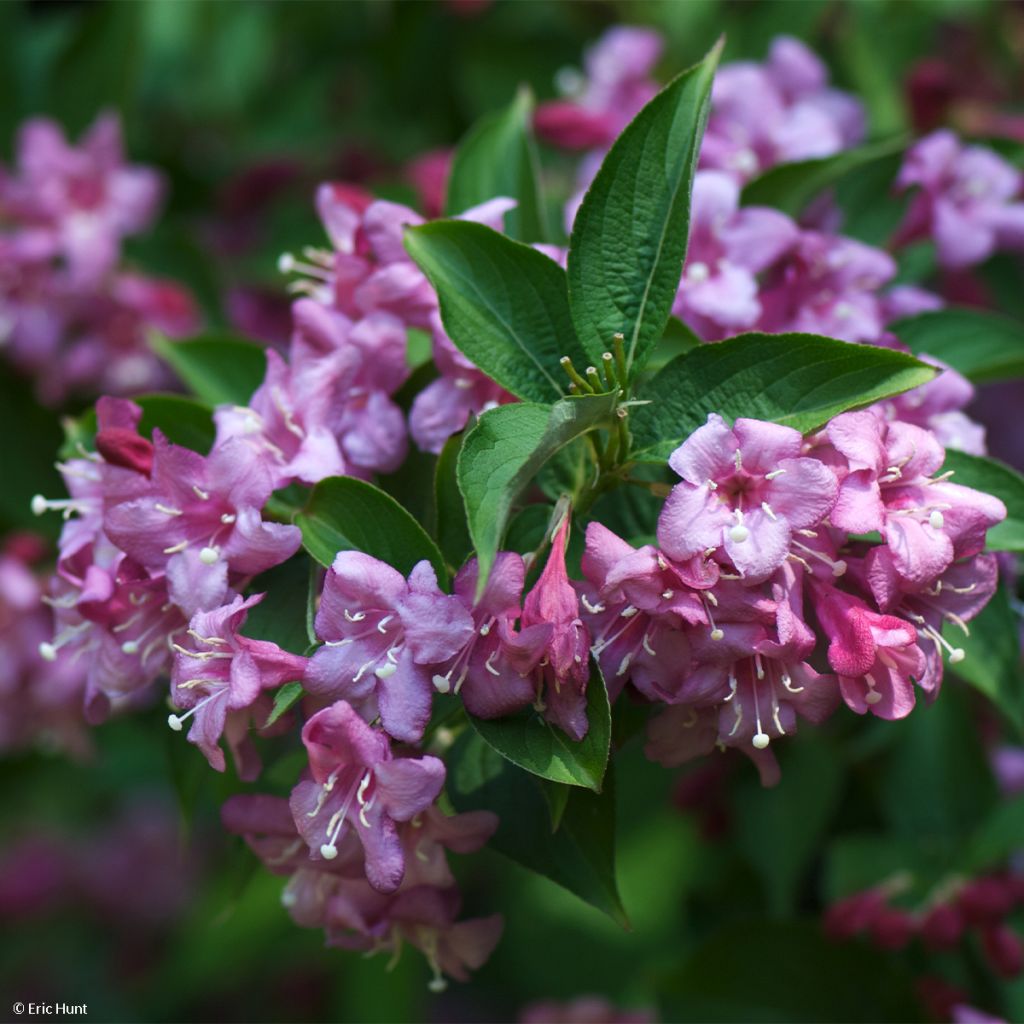

Weigela florida Korea
Weigela florida Korea
Weigela florida Korea
Old-fashioned Weigela
This item cannot be shipped to the selected country
Delivery charge from €5.90
More information
Schedule delivery date,
and select date in basket
This plant carries a 24 months recovery warranty
More information
We guarantee the quality of our plants for a full growing cycle, and will replace at our expense any plant that fails to recover under normal climatic and planting conditions.
From €5.90 for pickup delivery and €6.90 for home delivery
Express home delivery from €8.90.
Does this plant fit my garden?
Set up your Plantfit profile →
Description
Weigela florida 'Korea' is a variety with tubular flowers of a very bright pink colour. This shrub spreads a little more in width than in height, making it suitable for planting in the centre of a flower bed or as a standalone plant. With its beautiful stature, it also fits well in a flowering hedge, adding charm with its beautiful flowering. Highly adaptable in terms of soil, it will thrive in full sun or partial shade.
Weigela belongs to the Caprifoliaceae family, which also includes honeysuckles (Lonicera) or the charming Leycesteria formosa, also known as the "pheasant berry" (in reality, a small shrub with remarkable decorative fruits). Weigelas, which were very popular a few decades ago, have somewhat fallen out of favour in recent years. However, they are still easy, generous, and adaptable plants that require little attention. The Weigela florida species, contrary to what its name suggests (which actually means "well-flowered"), does not originate from Florida but naturally grows in the open forests of China, Korea, and Japan. It is a shrub that reaches around 2 to 3 m (7 to 10 ft) in all directions, with branches bending under the weight of numerous pink spring flowers.
The 'Korea' variety is derived from this species: it stands out mainly for its abundant flowers of a very vibrant pink, almost purple colour. The flowering period begins in May and continues into June, with the shrub forming a more or less regular ball shape, with branches extending to the right and left, giving it a slightly tousled and friendly appearance. It tends to spread a little in width, reaching a height of about 2 m (7 ft). Thus forming a visible mass of vegetation, it will provide the structure for a flower bed and will also be precious as a standalone plant in a small to medium-sized garden. Like all Weigelas, the 'Korea' cultivar is highly adaptable: it appreciates limestone but will also be content with any good, well-drained garden soil that is not too dry, in non-scorching sunlight or partial shade. Hardy, it can withstand temperatures down to -15 °C (5 °F). It is worth noting that Weigela, even when mature, is easy to transplant thanks to its relatively shallow root system.
Weigela florida 'Korea' excels as a background plant in small gardens when combined with white spring blooms, such as those of Japanese spirea 'Halward's Silver', which is smaller and can be planted in front of the weigela. It also brightens up mixed hedges with its colourful touch and natural bushy appearance. It can be happily paired with Mexican orange blossom with its small fragrant white flowers, or with other easy-to-grow plants such as abelias or forsythias.
Report an error about the product description
Weigela florida Korea in pictures
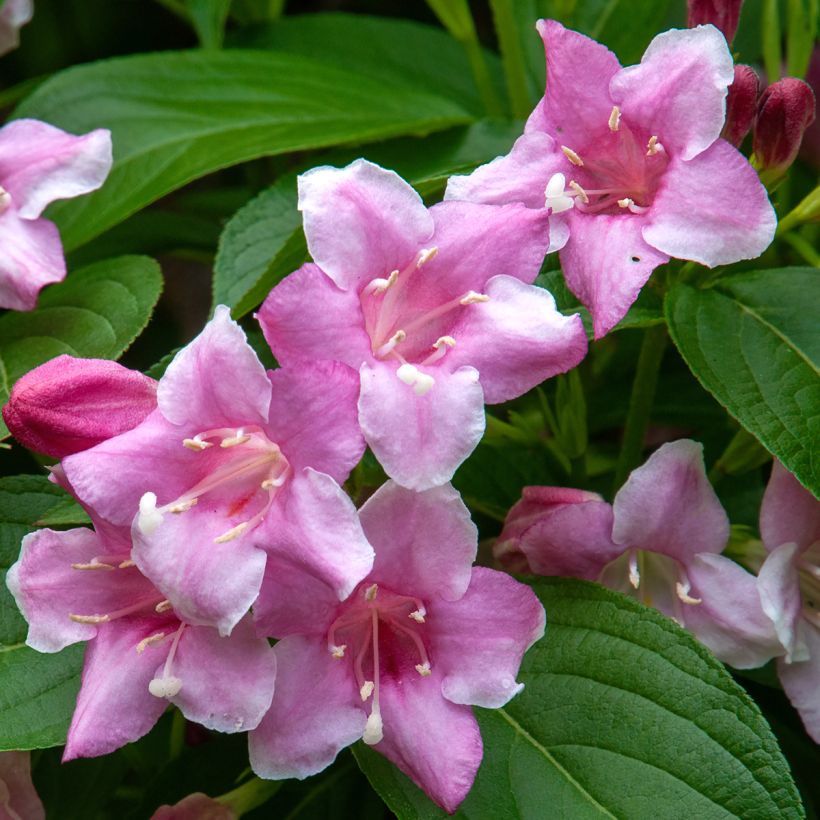

Plant habit
Flowering
Foliage
Botanical data
Weigela
florida
Korea
Caprifoliaceae
Old-fashioned Weigela
Cultivar or hybrid
Other Weigela
Planting and care
Hardy down to -15 °C (5 °F), Weigela florida 'Korea' thrives in sunny or semi-shaded positions. Plant it in a moist but well-drained ordinary soil, with a neutral to slightly alkaline pH, from October to March (excluding the frost period). To promote flowering, shorten the branches that have produced spring flowers by two-thirds, just after flowering.
Planting period
Intended location
Care
This item has not been reviewed yet - be the first to leave a review about it.
Foolproof Shrubs
Haven't found what you were looking for?
Hardiness is the lowest winter temperature a plant can endure without suffering serious damage or even dying. However, hardiness is affected by location (a sheltered area, such as a patio), protection (winter cover) and soil type (hardiness is improved by well-drained soil).

Photo Sharing Terms & Conditions
In order to encourage gardeners to interact and share their experiences, Promesse de fleurs offers various media enabling content to be uploaded onto its Site - in particular via the ‘Photo sharing’ module.
The User agrees to refrain from:
- Posting any content that is illegal, prejudicial, insulting, racist, inciteful to hatred, revisionist, contrary to public decency, that infringes on privacy or on the privacy rights of third parties, in particular the publicity rights of persons and goods, intellectual property rights, or the right to privacy.
- Submitting content on behalf of a third party;
- Impersonate the identity of a third party and/or publish any personal information about a third party;
In general, the User undertakes to refrain from any unethical behaviour.
All Content (in particular text, comments, files, images, photos, videos, creative works, etc.), which may be subject to property or intellectual property rights, image or other private rights, shall remain the property of the User, subject to the limited rights granted by the terms of the licence granted by Promesse de fleurs as stated below. Users are at liberty to publish or not to publish such Content on the Site, notably via the ‘Photo Sharing’ facility, and accept that this Content shall be made public and freely accessible, notably on the Internet.
Users further acknowledge, undertake to have ,and guarantee that they hold all necessary rights and permissions to publish such material on the Site, in particular with regard to the legislation in force pertaining to any privacy, property, intellectual property, image, or contractual rights, or rights of any other nature. By publishing such Content on the Site, Users acknowledge accepting full liability as publishers of the Content within the meaning of the law, and grant Promesse de fleurs, free of charge, an inclusive, worldwide licence for the said Content for the entire duration of its publication, including all reproduction, representation, up/downloading, displaying, performing, transmission, and storage rights.
Users also grant permission for their name to be linked to the Content and accept that this link may not always be made available.
By engaging in posting material, Users consent to their Content becoming automatically accessible on the Internet, in particular on other sites and/or blogs and/or web pages of the Promesse de fleurs site, including in particular social pages and the Promesse de fleurs catalogue.
Users may secure the removal of entrusted content free of charge by issuing a simple request via our contact form.
The flowering period indicated on our website applies to countries and regions located in USDA zone 8 (France, the United Kingdom, Ireland, the Netherlands, etc.)
It will vary according to where you live:
- In zones 9 to 10 (Italy, Spain, Greece, etc.), flowering will occur about 2 to 4 weeks earlier.
- In zones 6 to 7 (Germany, Poland, Slovenia, and lower mountainous regions), flowering will be delayed by 2 to 3 weeks.
- In zone 5 (Central Europe, Scandinavia), blooming will be delayed by 3 to 5 weeks.
In temperate climates, pruning of spring-flowering shrubs (forsythia, spireas, etc.) should be done just after flowering.
Pruning of summer-flowering shrubs (Indian Lilac, Perovskia, etc.) can be done in winter or spring.
In cold regions as well as with frost-sensitive plants, avoid pruning too early when severe frosts may still occur.
The planting period indicated on our website applies to countries and regions located in USDA zone 8 (France, United Kingdom, Ireland, Netherlands).
It will vary according to where you live:
- In Mediterranean zones (Marseille, Madrid, Milan, etc.), autumn and winter are the best planting periods.
- In continental zones (Strasbourg, Munich, Vienna, etc.), delay planting by 2 to 3 weeks in spring and bring it forward by 2 to 4 weeks in autumn.
- In mountainous regions (the Alps, Pyrenees, Carpathians, etc.), it is best to plant in late spring (May-June) or late summer (August-September).
The harvesting period indicated on our website applies to countries and regions in USDA zone 8 (France, England, Ireland, the Netherlands).
In colder areas (Scandinavia, Poland, Austria...) fruit and vegetable harvests are likely to be delayed by 3-4 weeks.
In warmer areas (Italy, Spain, Greece, etc.), harvesting will probably take place earlier, depending on weather conditions.
The sowing periods indicated on our website apply to countries and regions within USDA Zone 8 (France, UK, Ireland, Netherlands).
In colder areas (Scandinavia, Poland, Austria...), delay any outdoor sowing by 3-4 weeks, or sow under glass.
In warmer climes (Italy, Spain, Greece, etc.), bring outdoor sowing forward by a few weeks.

































